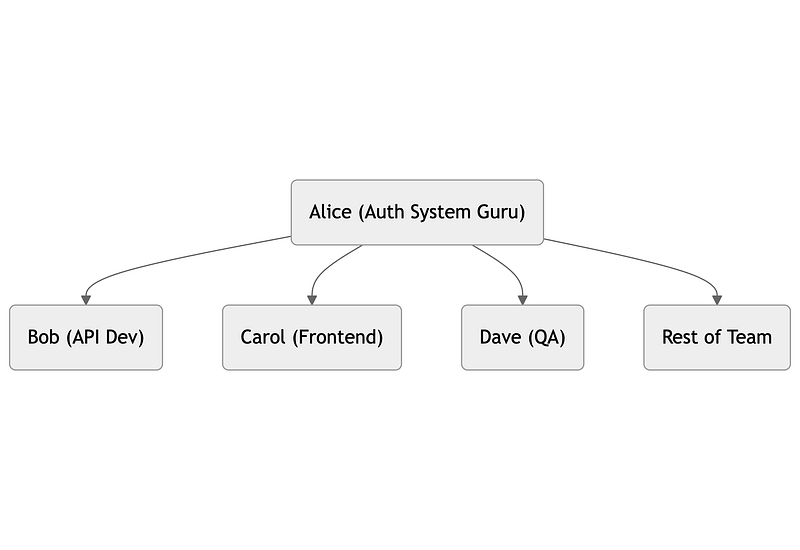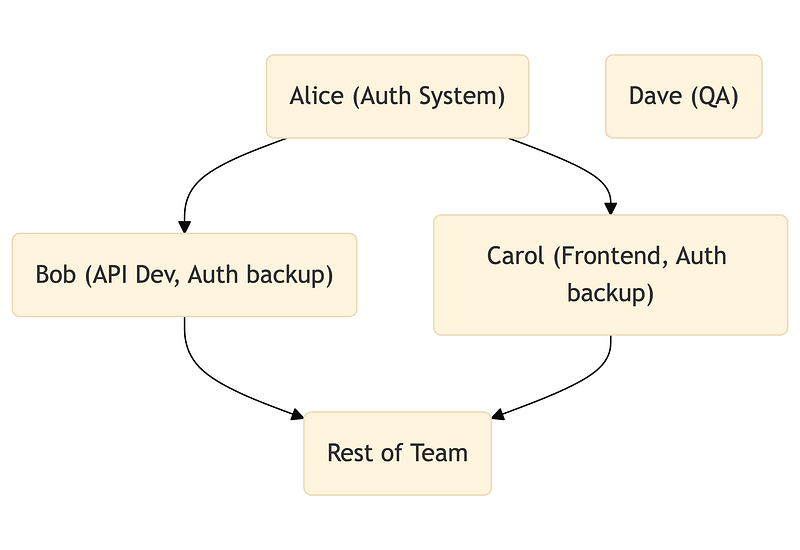
How the “Expert in Charge” Myth Breaks Teams and What Actually Builds Resilience
For years, I held onto a belief that cost me more than sleep. It gave me burnout after burnout, endless nights staring at my ceiling, and almost wrecked my career.
I convinced myself that a LEADER is supposed to have the answers.
Not just some of them, but all of them.
The “expert” in the room.
The human Stack Overflow.
I thought my job was to weigh in on every decision, anticipate every risk, fix every flaw, and never admit doubt.
If a ball dropped, it must have been because I wasn’t watching closely enough.
If you’ve spent much time in tech, you know how this story goes.
Micromanagement disguised as diligence.
Bottlenecks dressed up as “quality control.”
Nights spent combing through project boards because… well, isn’t that what a responsible manager does?
I called it leadership.
But it wasn’t leadership.
It was fear. Disguised as control.
And it’s a trap that still snares too many of us.
Why Do We Worship the Know-It-All?
This “omniscient boss” mythology has been baked into corporate life for decades.
Maybe it started in the age of Ford and GE, when a few people really did make all the big decisions.
Or maybe it’s because Silicon Valley made legends out of CEOs who could both write code and raise capital before lunch.
Whatever the reason, most of us entered the workforce believing the leader should be the answer key.
Promotions rewarded competence, so competence became synonymous with being right.
The higher you climb, the less it’s okay to say, “I’m not sure.”
Admit you don’t know? Unthinkable.
You’d be found out.
Replaced.
Sidelined.
Hierarchy only amplified this.
In most orgs, the boss signed off on everything: requirements, budgets, hires, and even what snacks went in the kitchen.
If a project derailed, it was “the manager’s fault” for not catching it sooner.
So we developed the habit of being everywhere, knowing everything, and making damn sure nothing could slip past our net.
And it worked.
At least, until it didn’t.
The Knowledge Mirage…and Its Hidden Cost
As of today, this old-school model is less sustainable than ever.
Why?
Because work has changed.
Tech moves too fast for any one person to stay on top of every tool, every framework, and every market twist.
The illusion of omniscience crumbles under the weight of real complexity.
But the myth hangs on.
Why?
Because it’s comfortable.
For both leaders and their teams.
For leaders, being the answer-person validates our years of learning and gives us a reason to exist.
For teams, it takes away the burden of owning tough calls.
The boss knows best, right?
Except it’s a dead end.
I learned this the hard way.
The more I pretended to know, the less my team trusted my actual judgment.
They could smell the bluffs.
Worse, they stopped voicing new ideas or pushing back.
Why argue with someone who “already knows”?
In the long run, the myth of the all-knowing leader creates risk everywhere.
Decisions pile up on your desk.
Team members wait for your blessing.
When you’re out, everything slows or stops.
I’ve seen organizations with a literal bus factor of one.
The hero boss gets sick, and the roadmap goes off a cliff.
It doesn’t just hurt delivery.
It saps morale.
Erodes creativity.
Burns out the very people you should be lifting up.
How the Power Trap Snares Smart People
Let’s be real. Control feels good.
There’s a rush that comes from being the hero, the fixer, the glue holding it all together.
When you’ve worked hard to become “the expert,” it’s tough to let go.
But leadership isn’t supposed to be a power hoard.
The more you cling to knowing everything, the more you become the bottleneck.
You swap speed for “safety.”
You become the reason things take longer, not the force that clears obstacles.
Eventually, your team stops solving problems and starts waiting for you to show up and save the day.
And every time you swoop in to fix a mess, you’re telling the team, “I don’t trust you to do this without me.”
It becomes a cycle of crisis, rescue, ego boost, and then back to crisis.
At this point, you have to ask yourself:
“Are you actually leading, or are you just being needed?”
What Happens When You Say “I Don’t Know”?
The real magic starts when you admit you don’t have all the answers.
Not as an excuse, but as an invitation.
The first time I tried this, I braced for chaos.
Instead, I got engagement. “I don’t know. What do you think?” changed the energy in the room.
People stepped up.
They brought fresh perspectives, saw gaps I’d missed, and fixed things I didn’t know were broken.
It turns out, nobody actually wants a hero boss.
They want a human leader.
Someone honest enough to say, “Let’s figure this out together.”
Teams become resilient when knowledge and responsibility are shared, not hoarded.
There’s plenty of research showing that teams work better when it’s safe to be wrong or unsure. (Google’s Project Aristotle is one of them.)
It’s not about being perfect.
It’s about making it safe to try, fail, and learn together.
In practical terms:
- Instead of being the answer machine, you become the question-asker.
- Instead of hoarding context, you distribute it.
- Instead of fixing every problem, you coach the team to solve it without you.
The result? Teams that actually scale.
Teams where you can take a holiday without worrying the whole thing will fall apart.
Making Teams That Don’t Depend On You
If you want resilience, make yourself less central.
Act more like a host than a hero.
The host’s job isn’t to put on the whole show.
It’s to set the stage, connect the people, and create the environment where the best work happens.
Here’s how it looks in practice:
- Rotate responsibility for running retros or incident reviews.
- Document your thinking, not just your decisions.
- Ask the quietest voice in the room what they’d do differently.
- Celebrate when someone solves a problem you didn’t even see.
Want to visualize the risk?
Track your team’s bus factor.
Draw a quick diagram of “who knows what.”
If you see a single point of failure, fix it now.

In many teams, critical knowledge lives with just one person.
We call her Alice here, the “Auth System Guru.”
If Alice is out, everything from API development to frontend integration slows down or stops.
Bob, Carol, Dave, and the rest of the team depend on Alice not just for answers but for sign-off, support, and context.
One vacation, one resignation, or even one sick day, and progress stalls.
Morale takes a hit.
Stress spikes.
Risk goes up.

In this new setup, Bob and Carol have become backup experts on the Auth system.
Not only can they carry on if Alice is unavailable, but they also bring new ideas and improvements from their own domains.
The “Rest of Team” is more connected.
The information flows sideways, not just down from the top.
Now, if Alice is out, work continues.
The team doesn’t just survive.
They’re stronger for it.
This structure isn’t theoretical.
It’s what separates brittle teams from resilient ones.
The difference isn’t just lines on a chart.
It’s the difference between dreading time off and actually being able to step away.
It’s the move from hero culture to team culture, from risk to resilience.
The goal is to reduce those single lines of dependency over time.
Everyone should have at least one peer who can cover for them.
Pragmatic Ways To Stay Out of the “Hero Trap”
Here’s what I wish someone had told me years ago:
The shift from know-it-all to true leader doesn’t happen all at once.
It’s not a checklist.
It’s a practice.
Still, you need a place to start. Here’s where I did:
- Say “I don’t ”know.” For real.
The first time I admitted this out loud, I was sure the room would go cold. Instead, my team leaned in. “I don’t know. What do you think?” turned out to be the phrase that unlocked trust. - Invite disagreement, even if it is uncomfortable.
It’s easy to say you want honest feedback. It’s harder when someone gently (or not so gently) pokes holes in your idea. I learned to genuinely appreciate constructive pushback, not just tolerate it. That’s when better decisions started happening. - Speak last, not first.
My default was always to engage with my view. Now, I try to hold back, even if I have a strong opinion. This lets quieter voices step up. I’ve been surprised more than once by who has the sharpest insight in the room. - Hand off something you control.
The first time I delegated ownership of a project, it was painful to watch someone else take it in a new direction. But the team grew. I grew. And the sky didn’t fall. - Celebrate collaboration, not heroics.
I used to hand out praise for the “lone wolf” who rescued a late-night deploy. Now, I spotlight the pairs or trios who spot problems early, or the teams who help each other ship on time. It’s quieter, but the impact lasts.
I won’t lie. Most days, these habits still feel awkward.
And every time I move to a new project or a new team, it gets even harder, because old patterns tend to creep back in.
Sometimes I catch myself slipping.
The difference now?
I notice it, and I try again the next day.
Leadership isn’t about having the answers.
It’s about building a team that can thrive without them.
Leadership for the World We Actually Live In
The old model of the boss who knows everything is a relic.
It’s not just outdated.
It’s hazardous in a world where complexity is only increasing.
The future belongs to those who lead with curiosity, humility, and trust.
If you’re still running yourself ragged to “keep up,” let go.
You’re not abdicating.
You’re finally doing your real job: making space for others to shine, so your team (and you) can accomplish things nobody could do alone.
Leadership is not about having all the answers.
It’s about building a team that can find them. Together.
Ask yourself, “Would you rather be the bottleneck or the catalyst?”
Choose wisely.
Today’s teams will know the difference.
And so will you.
V
Become a subscriber receive the latest updates in your inbox.






Member discussion